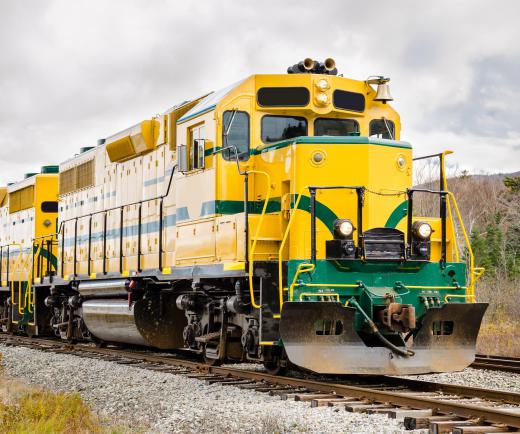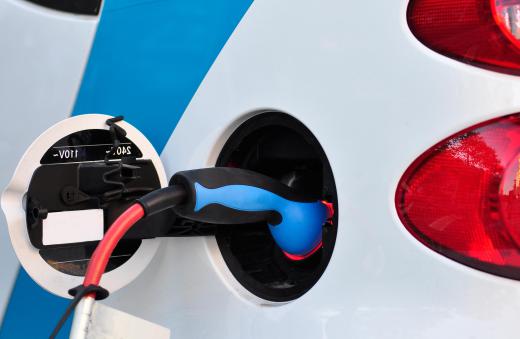What Is Electric Propulsion?
Electric propulsion is a type of locomotion using electric motors to move a vehicle. This type of propulsion is often used as an alternative to internal combustion engines, such as gasoline or diesel motors. Cars, boats, trains, and submarines are common examples of vehicles that make use of electric propulsion. One of the main advantages of this type of propulsion is a reduction in carbon emissions. Pollution is often lowered when electric motors are used in place of internal combustion engines.
The energy used to power electrically propelled vehicles can be provided and stored in a variety of ways. Some vehicles, such as trolleys, receive electricity from an external source. An electric rail or overhead power line is often used for this purpose. Other vehicles carry batteries, which must be recharged after being depleted. Advanced vehicles, including military ships and submarines, generate propulsion power from onboard nuclear reactors.

Cars that use electric propulsion are often seen as modern and new, but electric cars have actually existed since the late 1800s. Electric cars store energy using batteries. Unlike traditional cars that use a single engine, many electric cars have a separate motor connected to each wheel. Some cars feature regenerative braking, which uses the motors as electric generators. This allows electricity to be collected and re-used every time the car slows.

Electric propulsion can also be used on boats and ships. Like cars, electric boats usually have rechargeable batteries. Boats have several options available for recharging these batteries. Solar panels often work very well on boats, due to the unobstructed view of the sky found on the open sea. Some electrically propelled boats also gather energy from wind turbines.

Nearly all modern submarines use electric propulsion. Standard combustion engines require large amounts of air to function, and generate harmful fumes when running. These disadvantages are avoided when electric motors are used on a submarine. Additionally, many submarines are designed for stealth. Electric propulsion can operate very quietly and help reduce the chances of an undersea craft being detected.
Electric propulsion has been used for trains since 1837. Locomotives powered by electricity are common in Europe and Asia, while traditional diesel trains still dominate railways in the United States. Most electric trains do not hold onboard batteries, but are instead powered by electric lines or rails. These types of trains are very efficient, but the cost of installing power lines along an entire rail route can often be especially high.
AS FEATURED ON:
AS FEATURED ON:













Discuss this Article
Post your comments